We may receive a commission when you use our affiliate links. However, this does not impact our recommendations.
There aren’t too many designers-makers who produce cutting edge work which is original, elegant, and visually stunning. And yet I was able to find such a team just around the corner in our metropolitan “neighborhood” of Hoboken, NJ. Thomas Newman and Vladimir Krasnogorov’s shop is a fascinating furniture lab; in it you can find a CNC machine next to an old jointer, and a virtual reality helmet near a Lie Nielsen plane. The reason for this rich and stimulating habitat is clear: to produce breakthrough projects by incorporating everything that is possible in the duo’s arsenal of imagination and techniques. Tom and Vlad successfully collaborate to push the boundaries of design and wood to the limits. What allows them to do so is an exceptional mastery of both traditional woodworking techniques and high dexterity in the most advanced computer-aided design. In this entry, I will show Tom and Vlad’s most recent achievements in incorporating Bog Oak in their projects, and next time I will talk about their highly sophisticated computer-aided design creations.
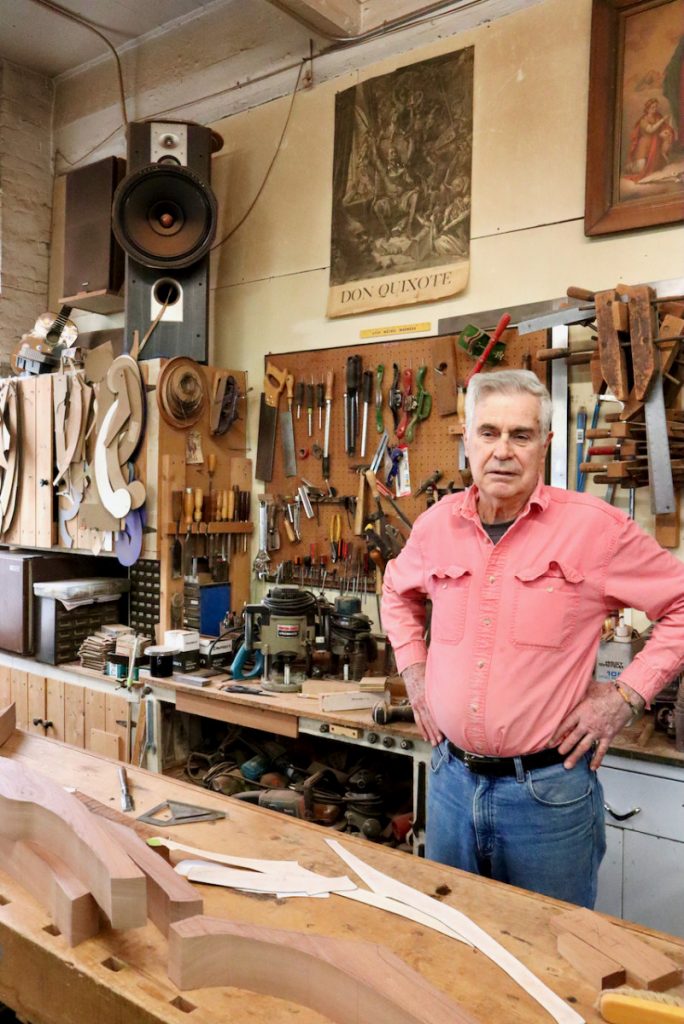
Thomas Newman in his shop.
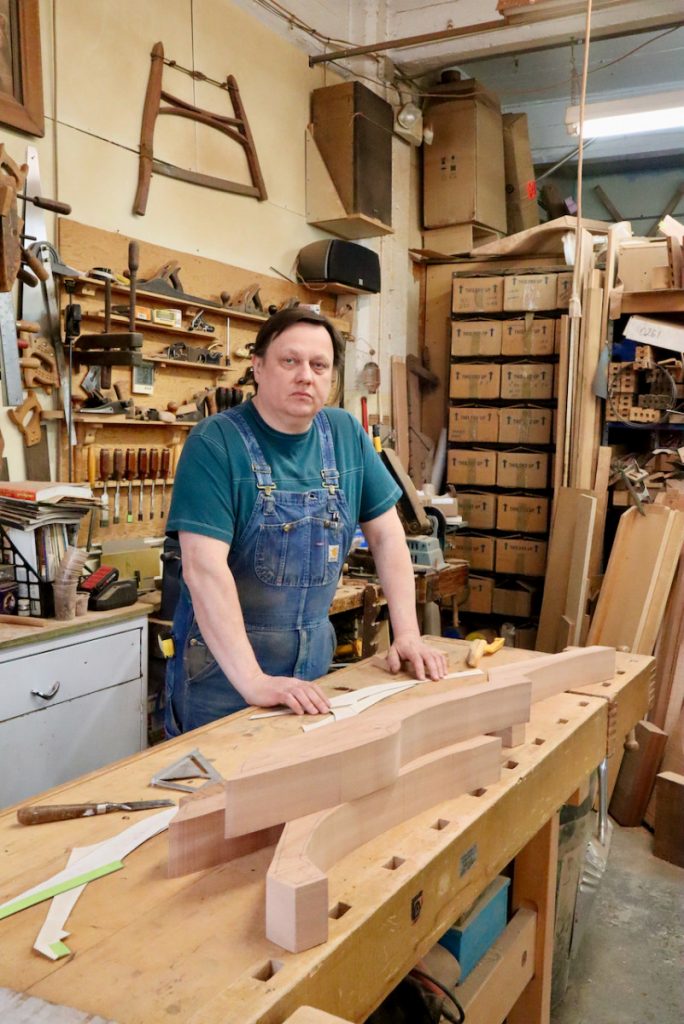
Vladimir Krasnogorov stands over mahogany blanks that are ready for the CNC machine.
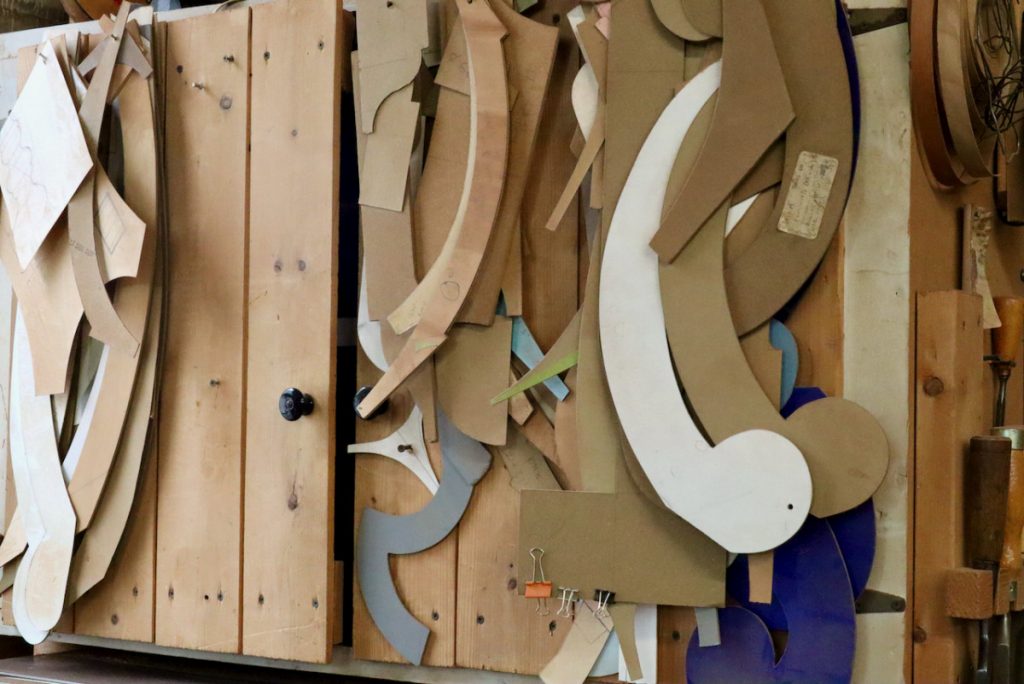
Furniture parts templates are hung up all over Tom’s shop.
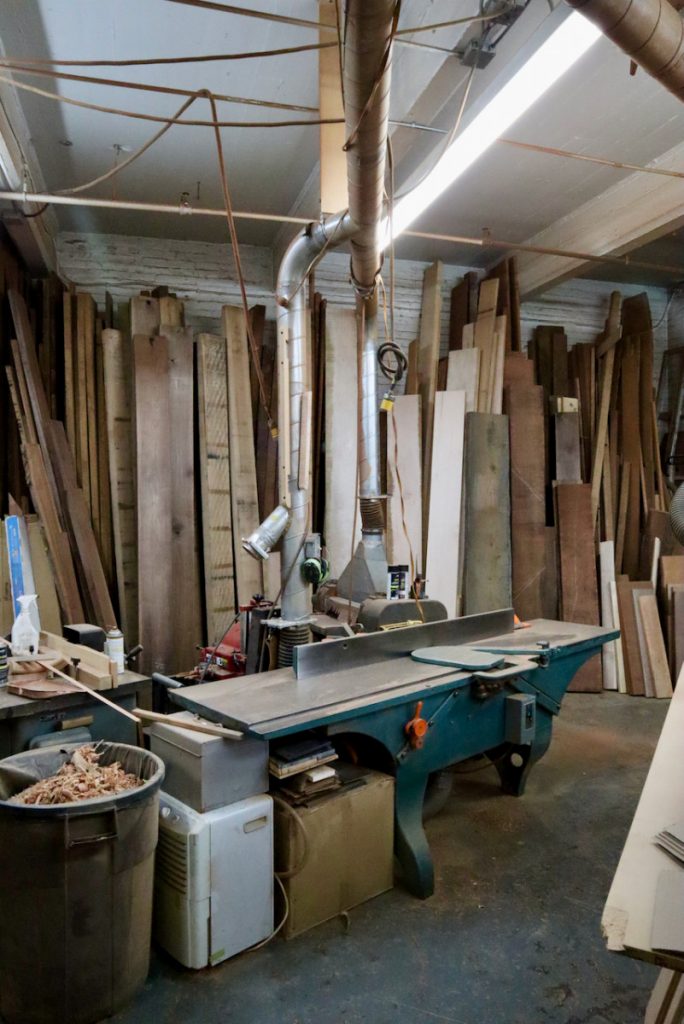
Even the most sophisticated CNC-made projects have to begin on a reliable jointer.
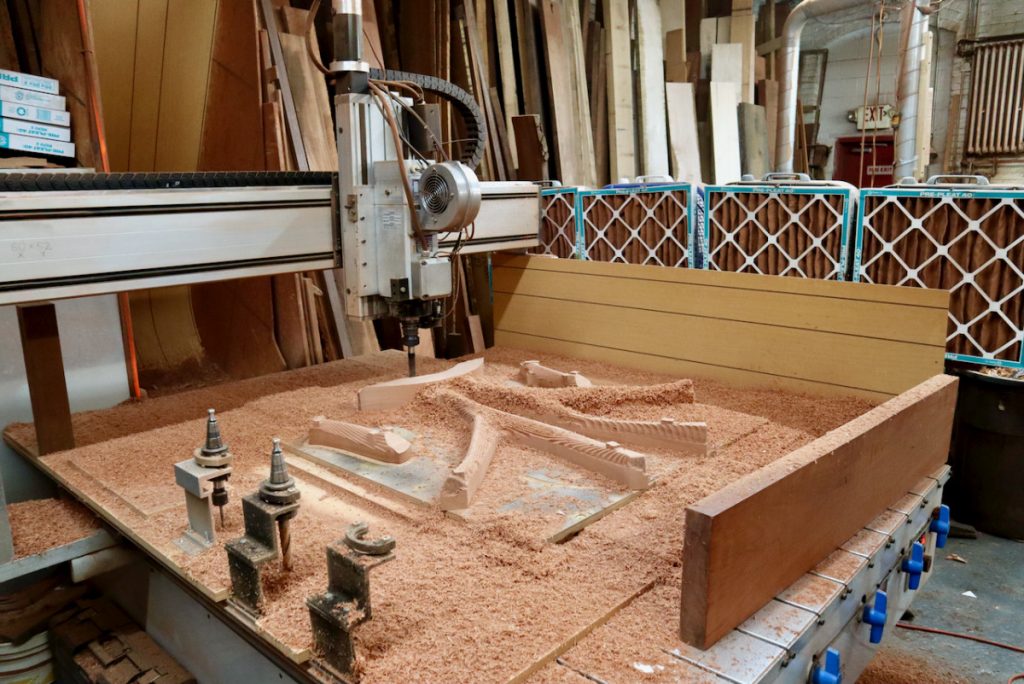
Tom’s CNC is plowing through solid mahogany to make parts for future chairs.
Before I begin showing what is currently done in their shop, let me introduce you to the founder and owner of this joint, Thomas Newman (Instagram). Tom began his love affair with wood more than fifty years ago. He first launched his career as a restorer of furniture. As an autodidact, he had immersed himself in books and magazines (in the 1970s there was no YouTube), and with a lot of hard work was able to position himself as one of New York City’s top restorers. Tom says that while the mechanics of joinery, hardware, and carcass construction could be grasped quite easily from looking at drawings and taking things apart, this was not the case with furniture finishes. Finishing was a subject that he spent lost of time with back in the days. He said that he could have not been so successful without the help of George Frank, an author and finishing expert who mentored him. In Tom’s words: “To know your way with finishes you need to prepare yourself for lots of trials and errors – and disasters”. Tom mentioned that when Frank retired and moved to Florida he gifted him a box filled with finishing goodies – rare concoctions of recipes from the pre-poly era. Towards the end of the 1970s, Tom was enchanted by furniture design and especially the works of George Nakashima. As before, he delved into numerous published sources, read, and experimented, and finally decided that he was ready to branch out into Studio Furniture.
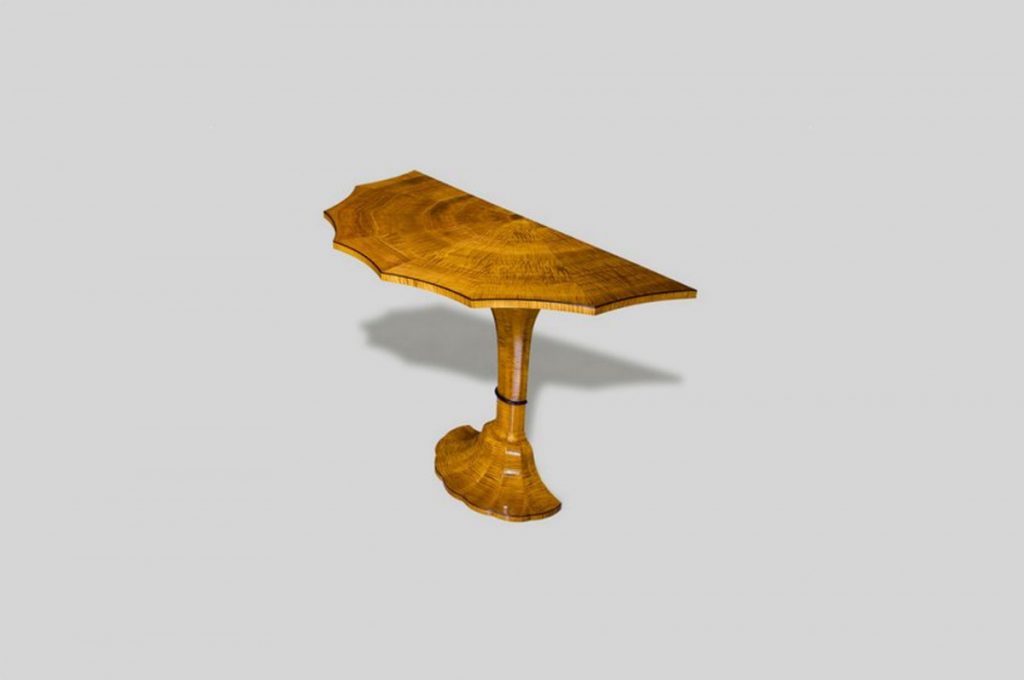
One of Tom’s beautiful solid wood and veneer furniture.
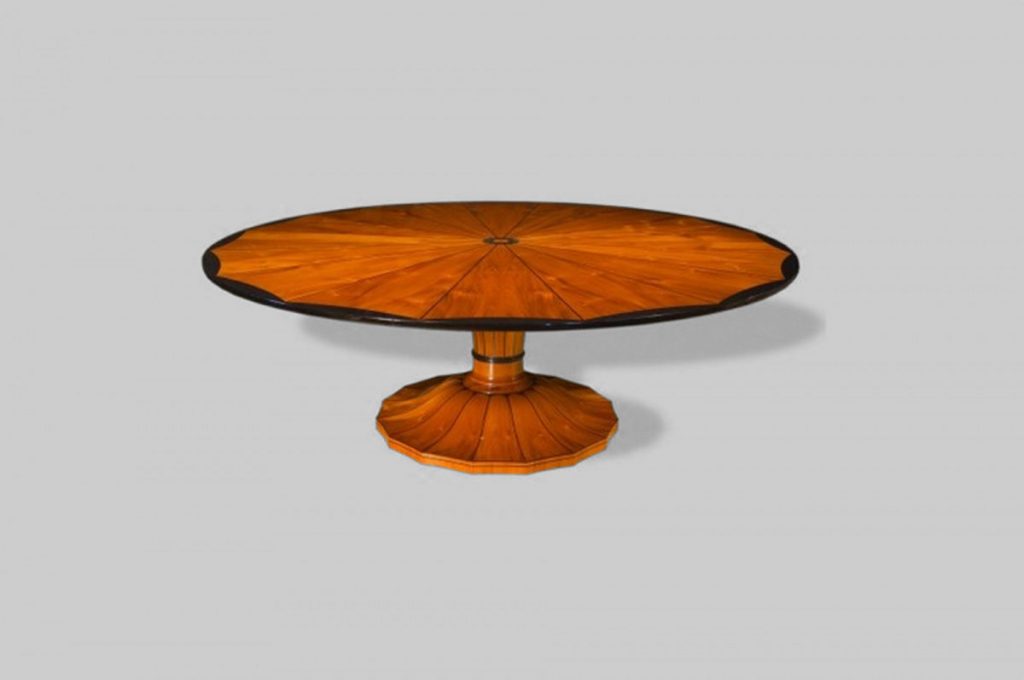
A round mahogany table with ebony trim. A “pie” design top made for Bill Diamond and Tony Baratta.
His first successful products were high-end traditionally styled custom-sized tables that he built for the Howard Kaplan showroom in New York. Many of the 500 tables that he built over the years stemmed from a handful of design archetypes that the clients could influence in terms of the type of wood or veneer, edge details, and hardware choices. That gave the customers, or their decorators, a feeling that they were part and parcel of the design game, and at the same time made Tom’s work less monotonic and repetitive.
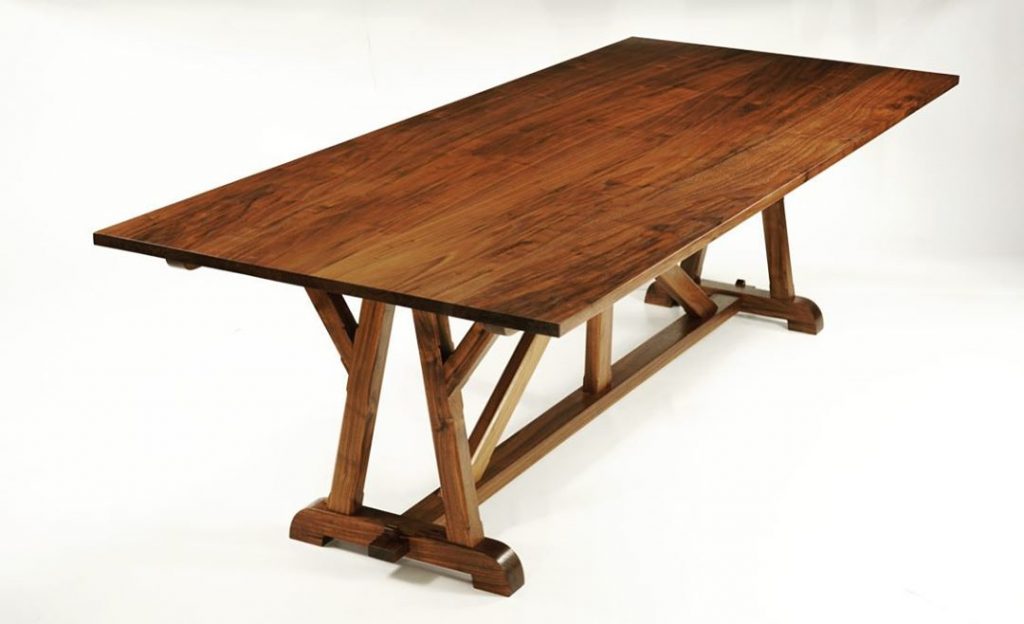
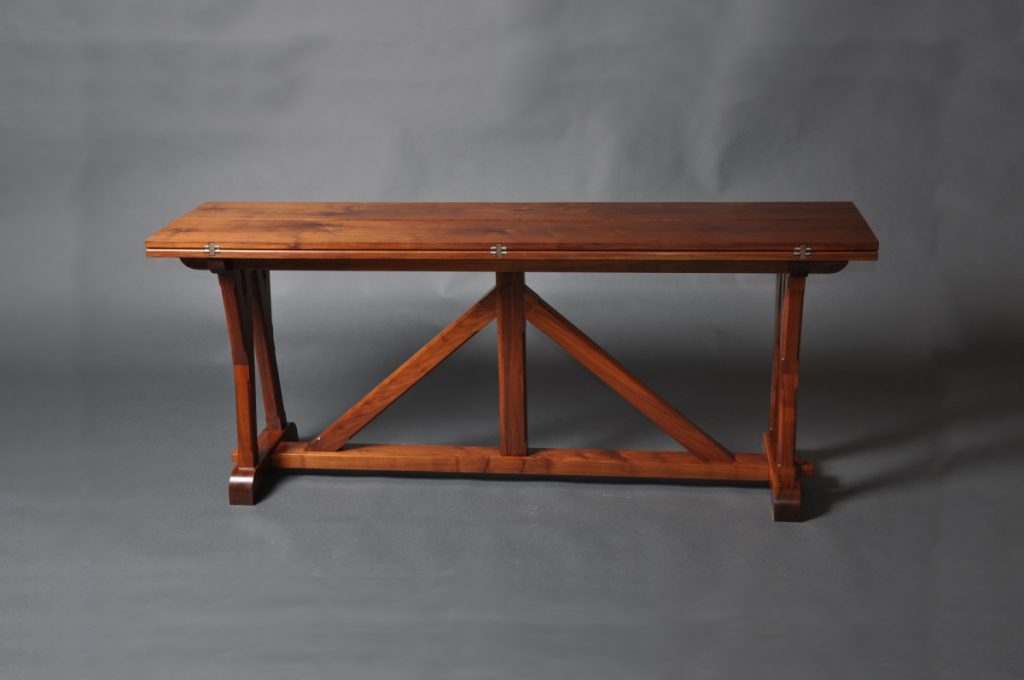
Tables built by Thomas Newman.
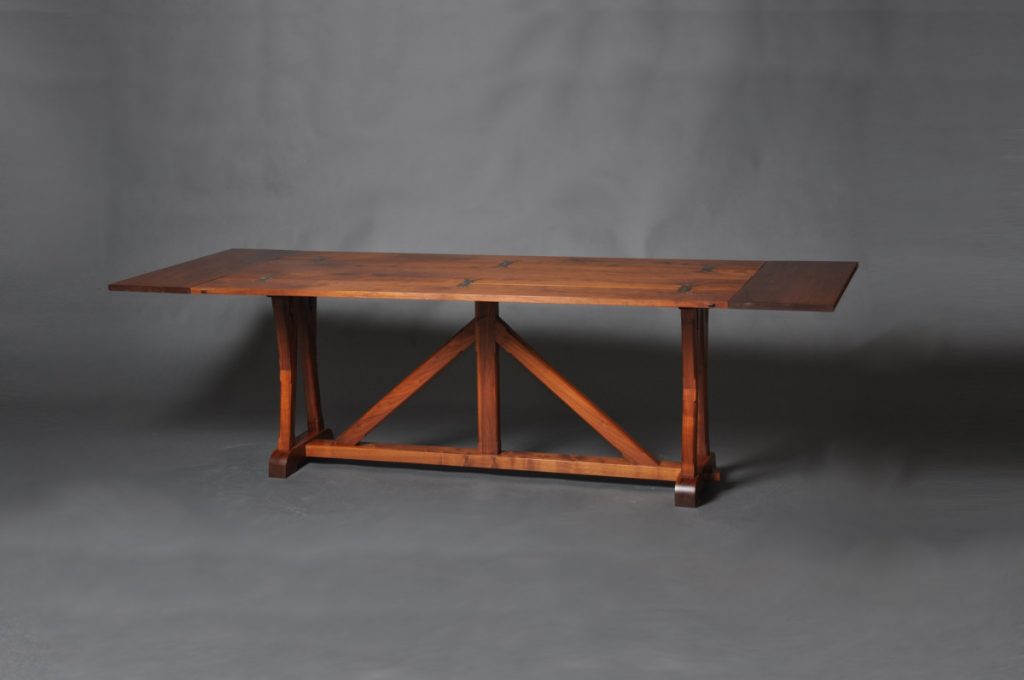
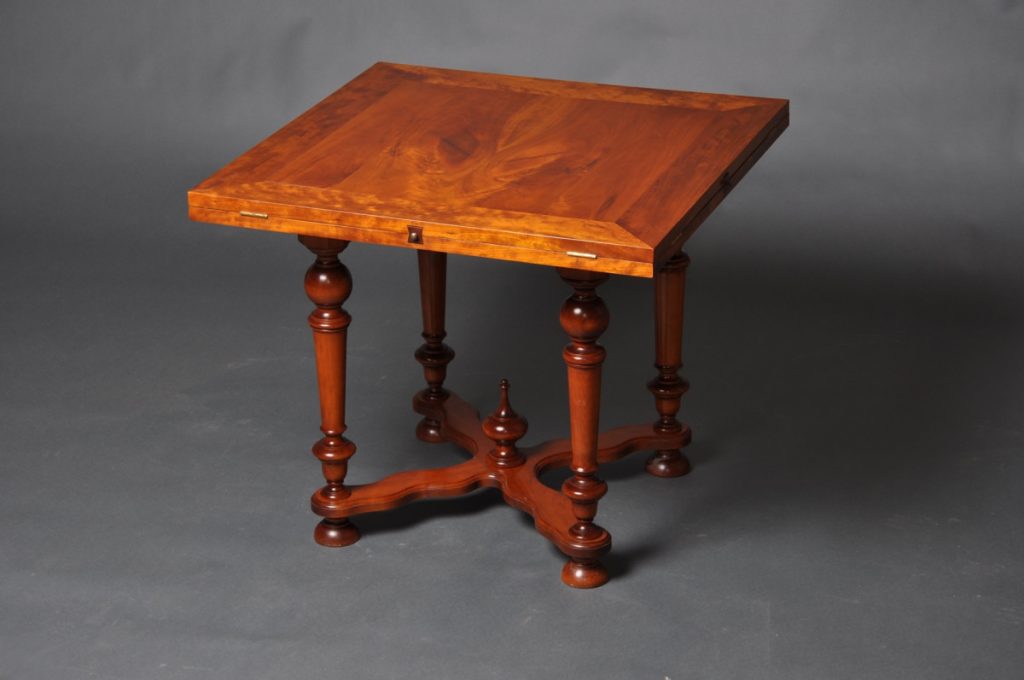
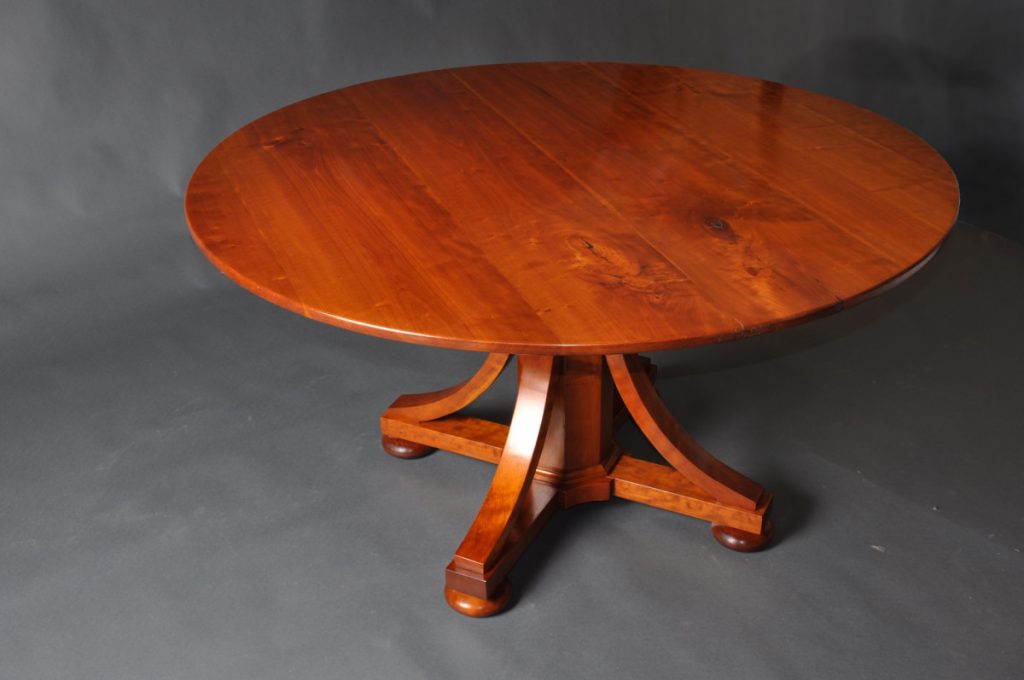
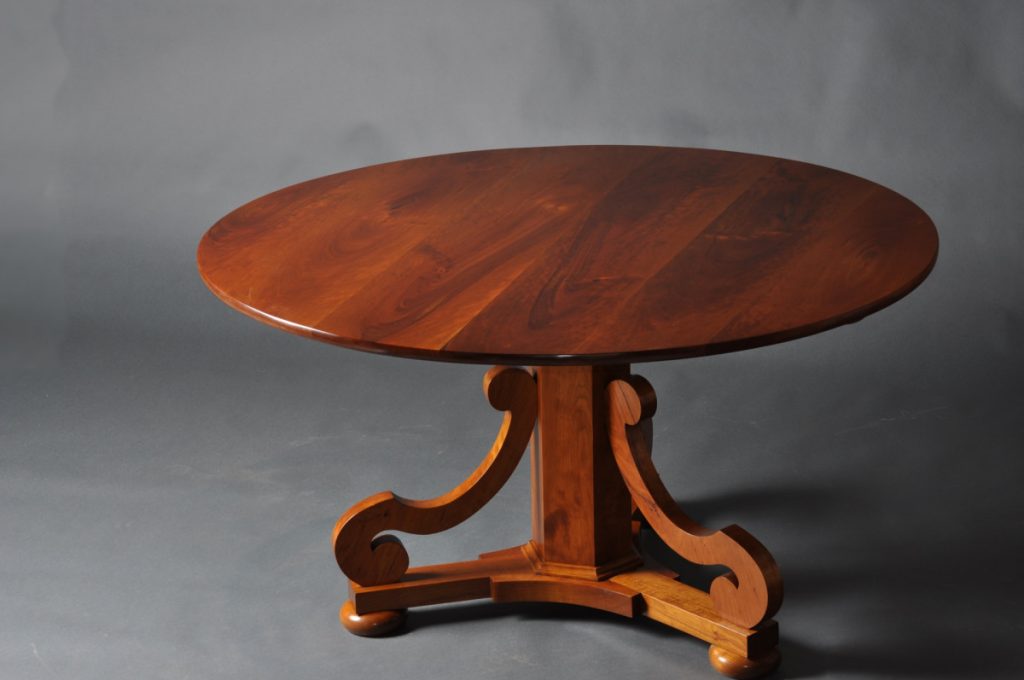
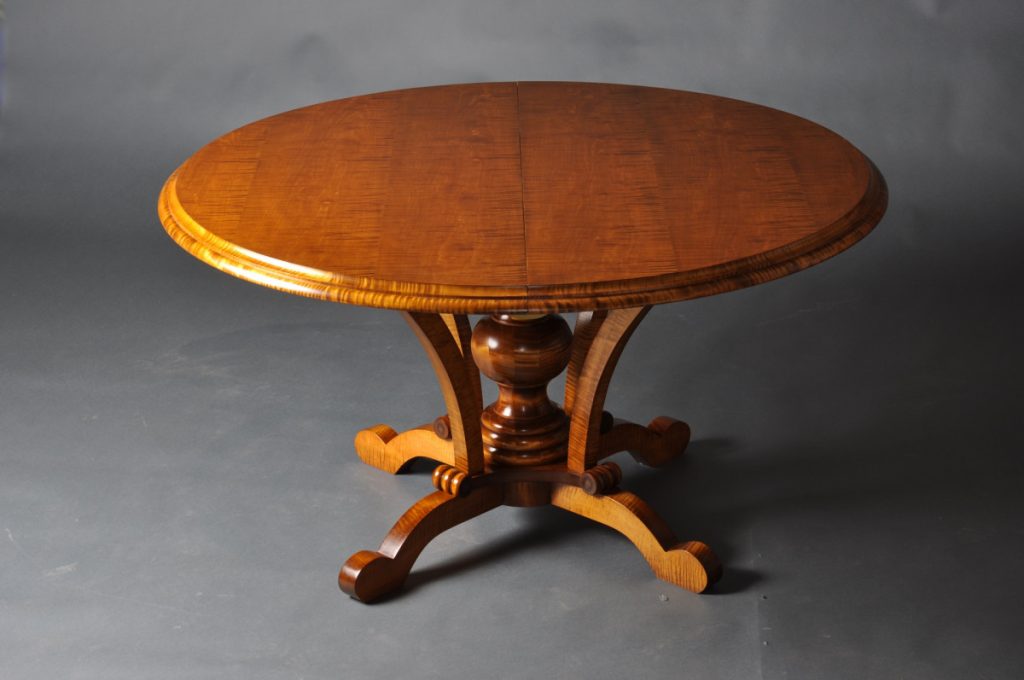
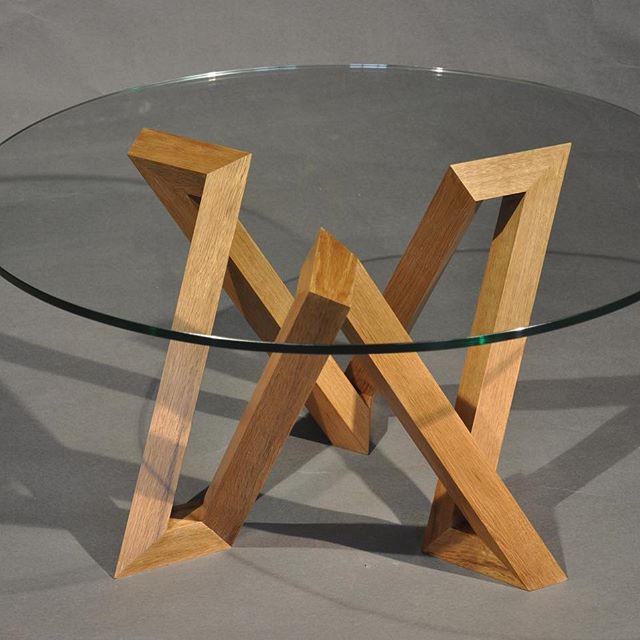
Designed by Max Terpinyan, build by Thomas Newman
Over the years Tom collaborated with many of the City’s iconic designers and decorators. With some, such as Bill Diamond and Tony Baratta, he accepted design indications and guidelines, but with others, he took the role of lead designer. As a person who relied on woodworking for making a living, he had to diversify his creative palette. He always sought ways to reach new clientele and has had his pieces on display and in the collection of famous Manhattan-based galleries. More recently, with the changing tides in commerce from the traditional brick and mortar joints into the Web-based representation, Tom’s and Vlad’s work was featured with the acclaimed contemporary Twentieth gallery.
Then, a few years ago Tom met Allen Telt, who introduced him to Bog Oak. After looking at, touching, and hearing the stories of this spectacular material, Tom became enchanted, and thus a new chapter in his long and prosperous career began. Most of Tom and Vlad’s Bog Oak projects involve the use of thick veneer over a substrate. To create their marquetry designs they harness Bog Oak’s natural color variation (from darker in the exterior to lighter and yellower in the log’s core) to compose stunning geometrical patterns. In other cases they let Bog Oak’s live edge slabs speak for themselves and pedestal them on hyper modern-looking bases.
Infinity Square Marquetry 4-Panel Screen in 1,200-Year-Old Bog Oak
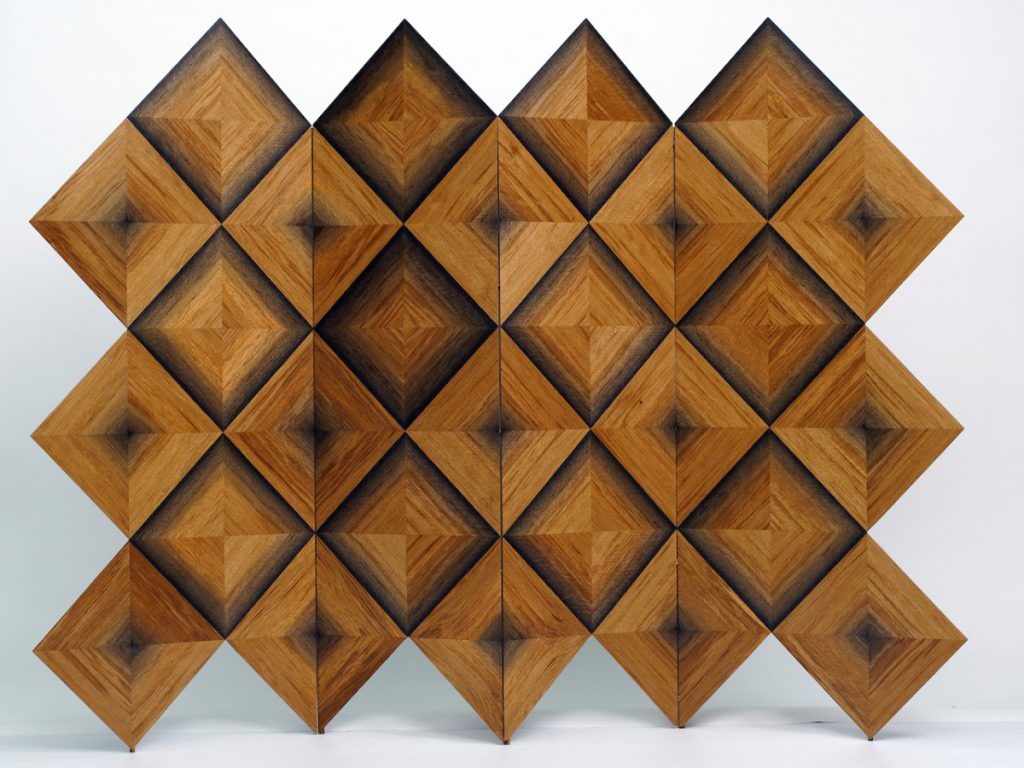
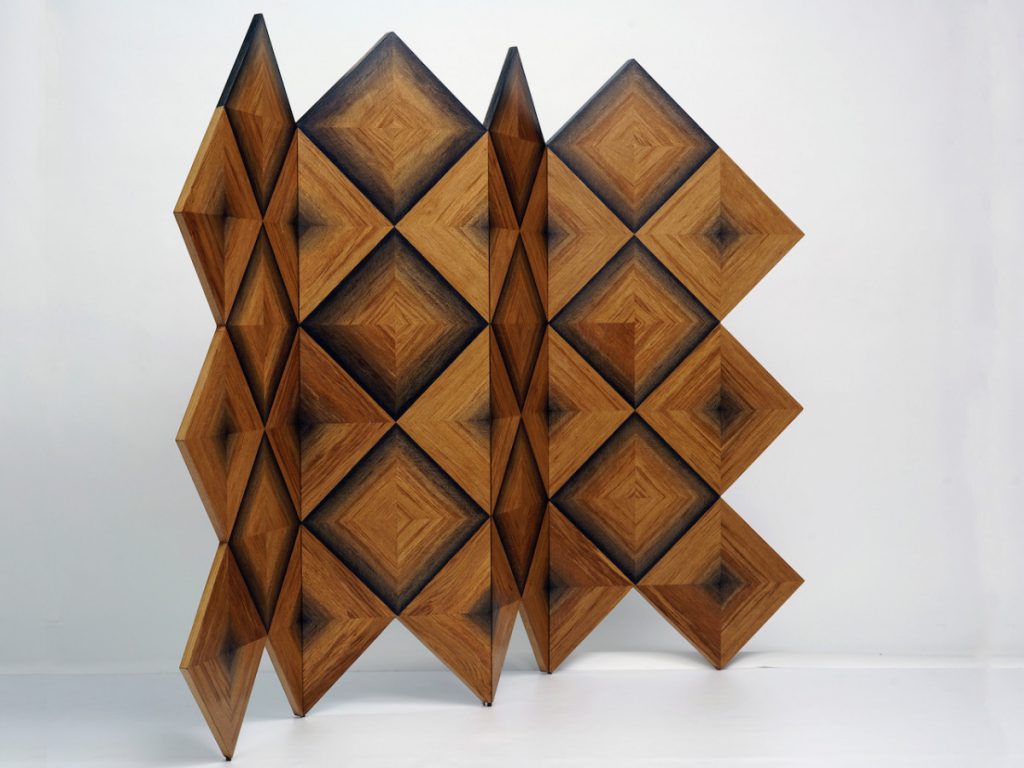
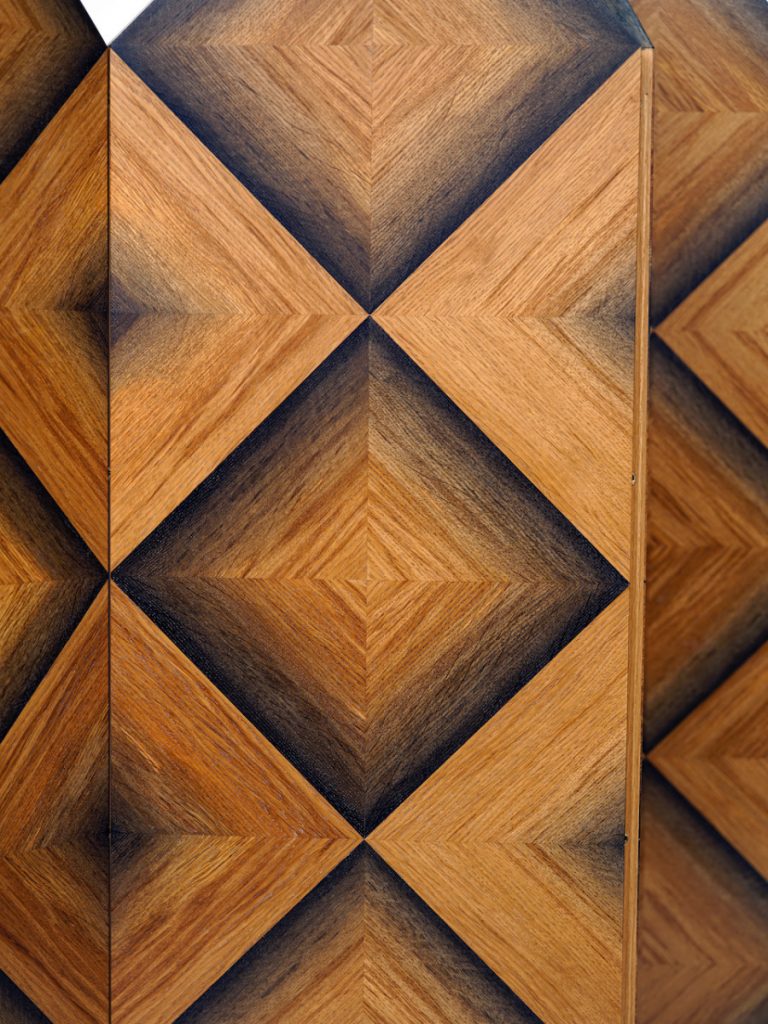
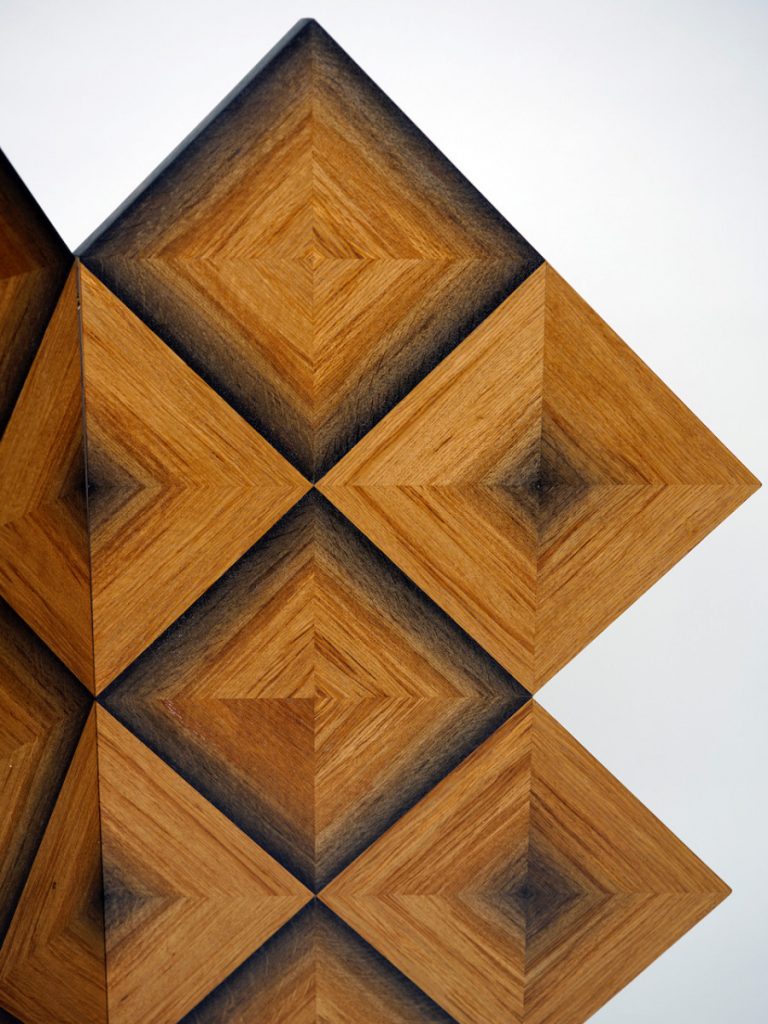
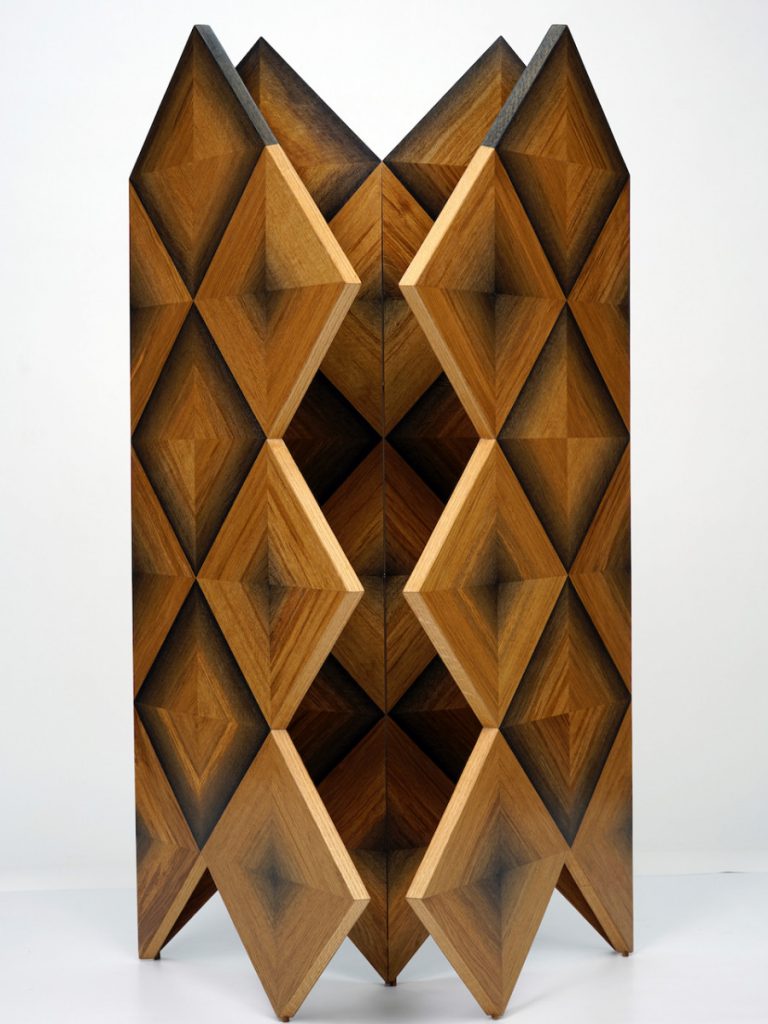
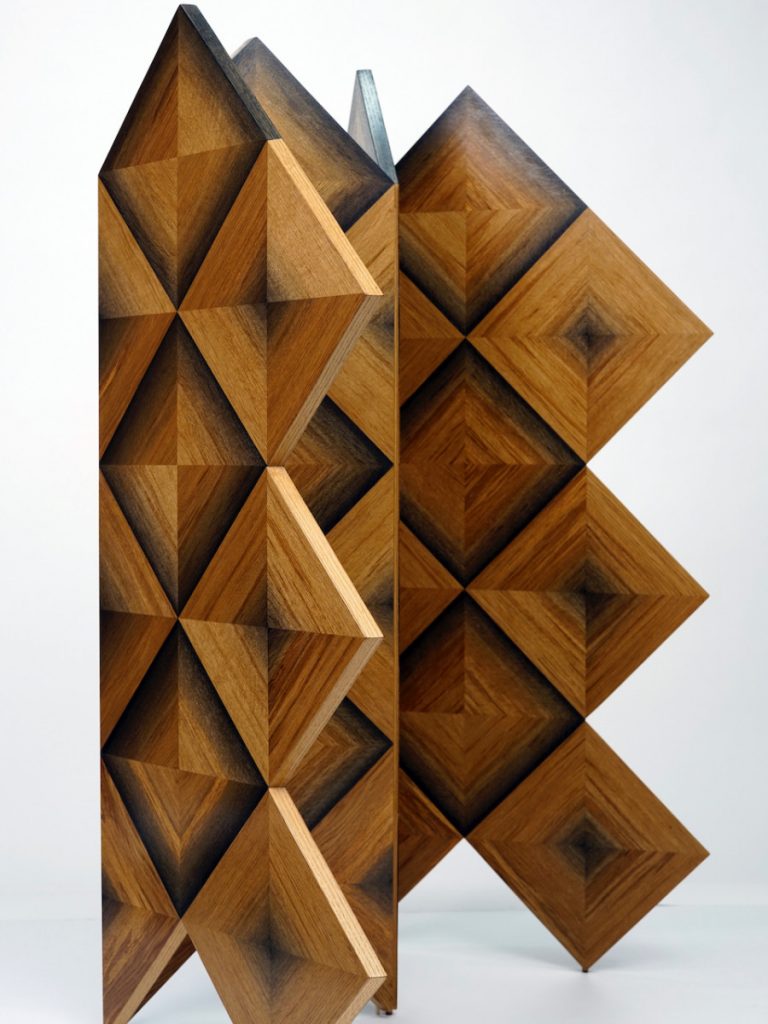
Infinity Squares-Table in 1,200-Year-Old Bog Oak
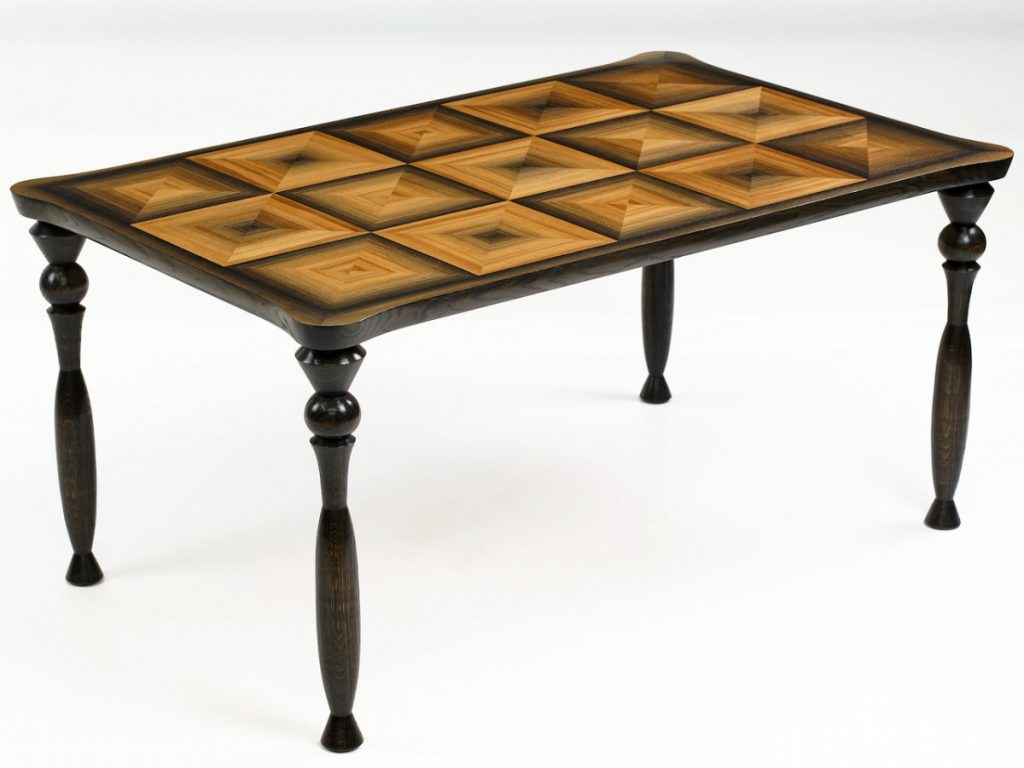
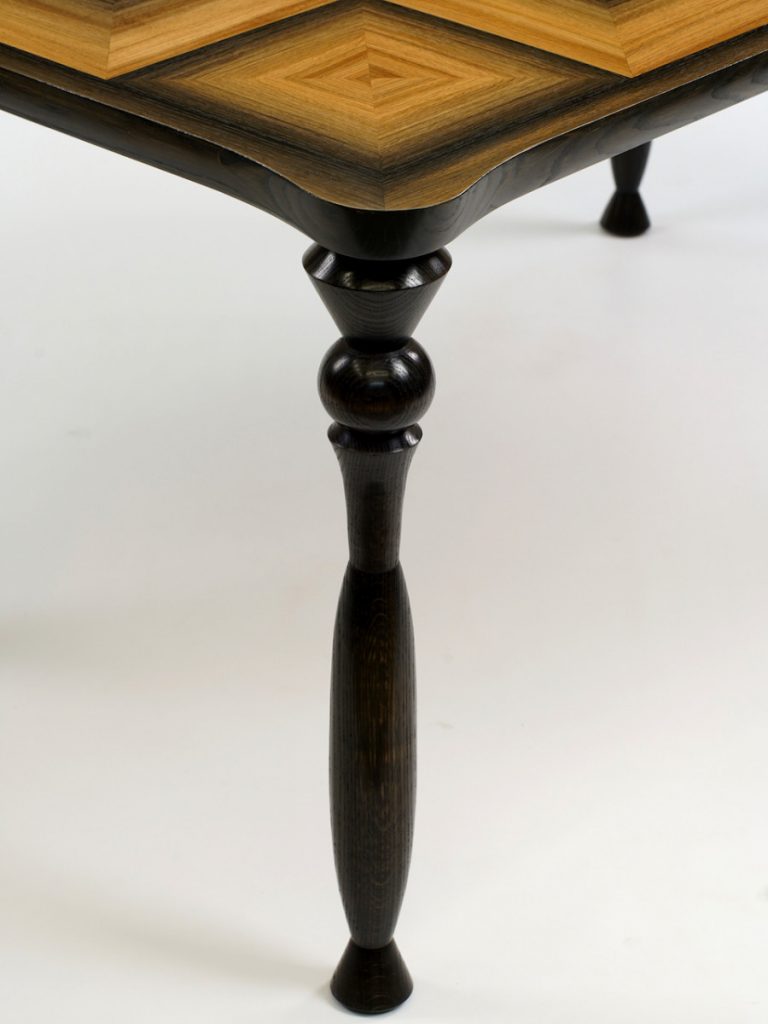
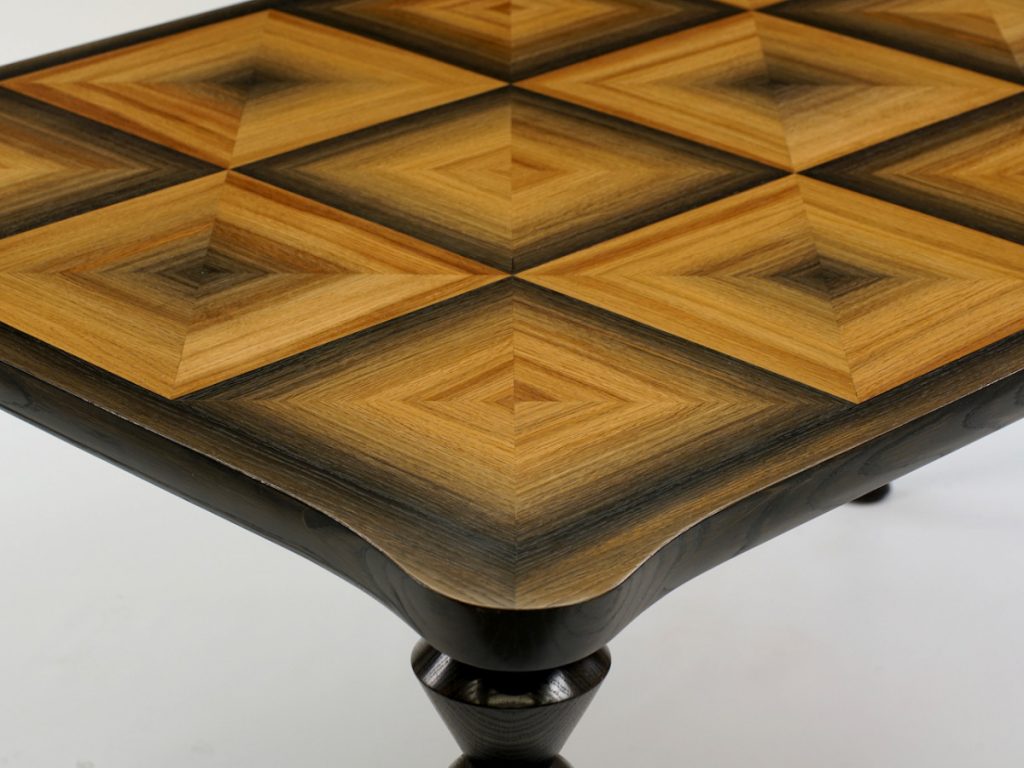
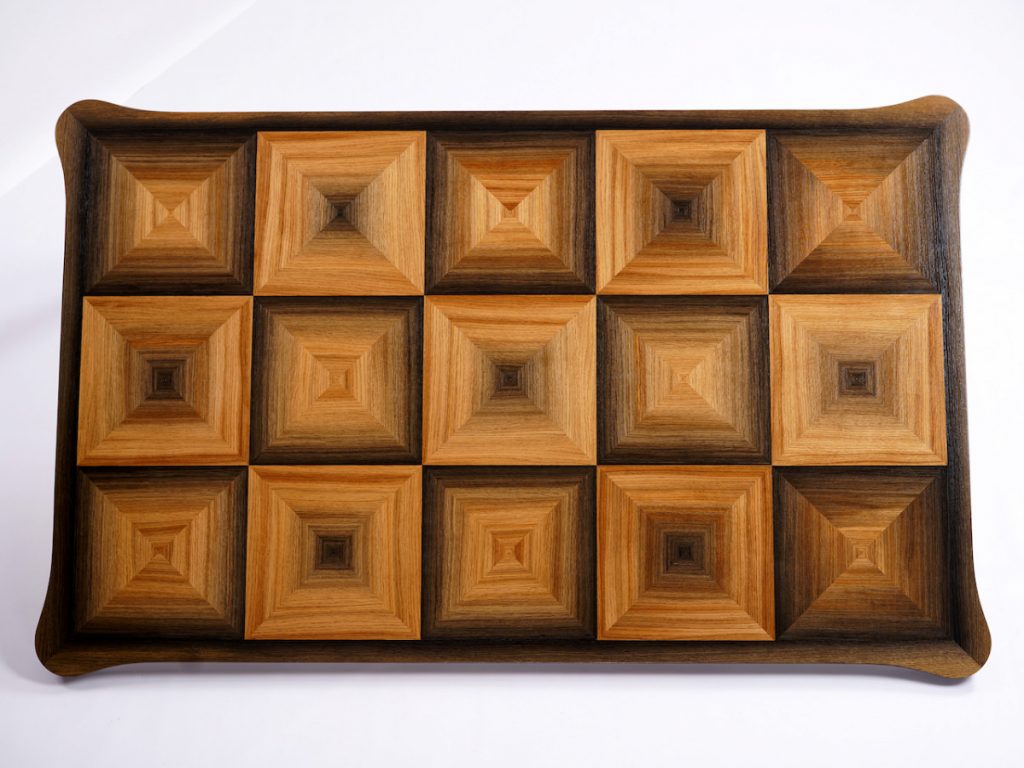
Dining table 2
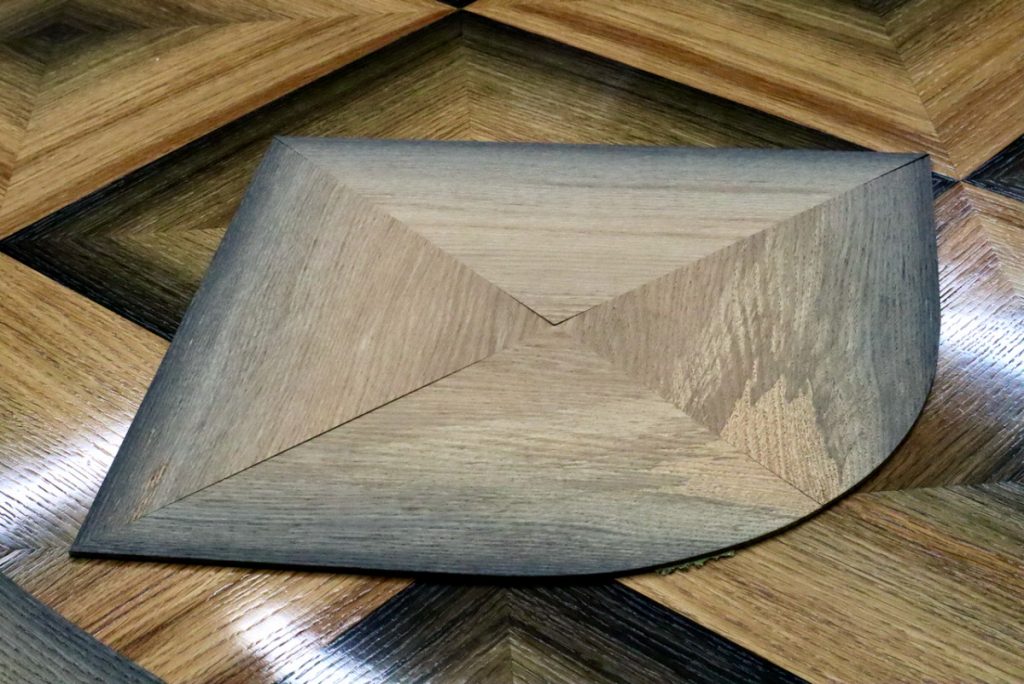
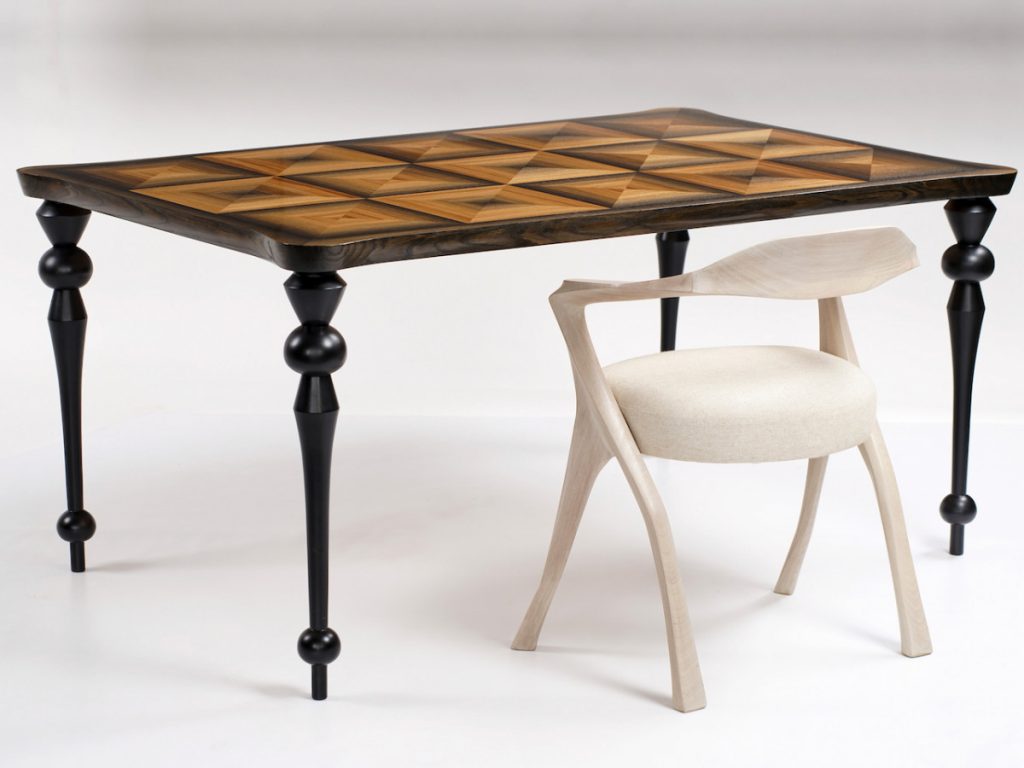
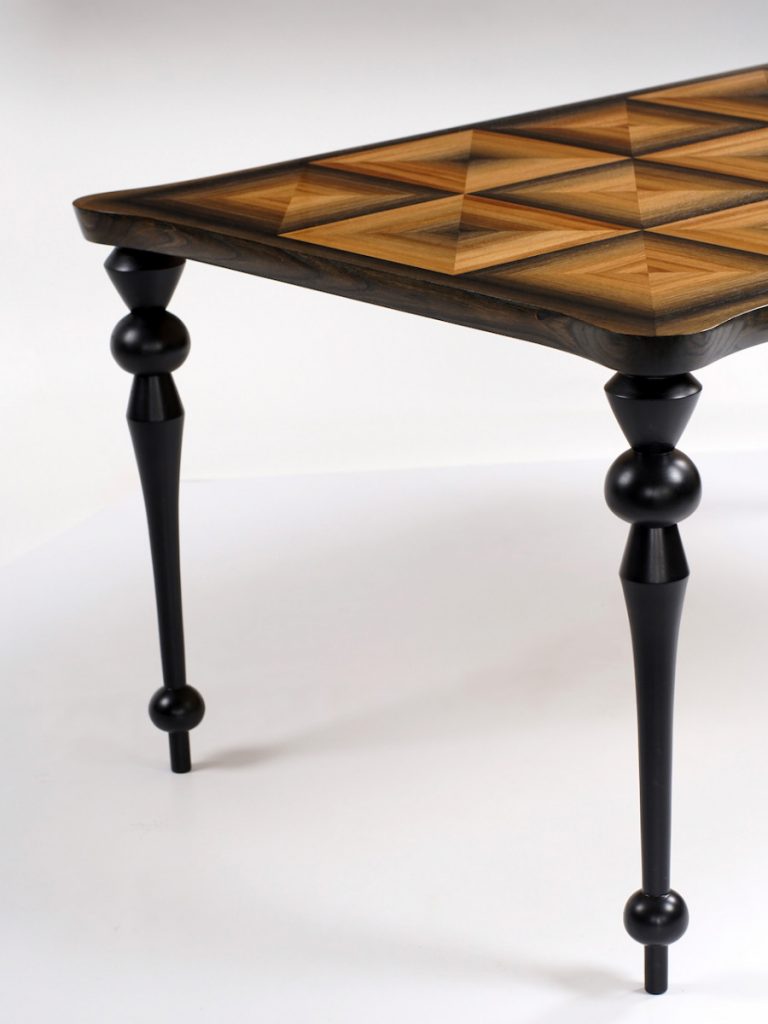
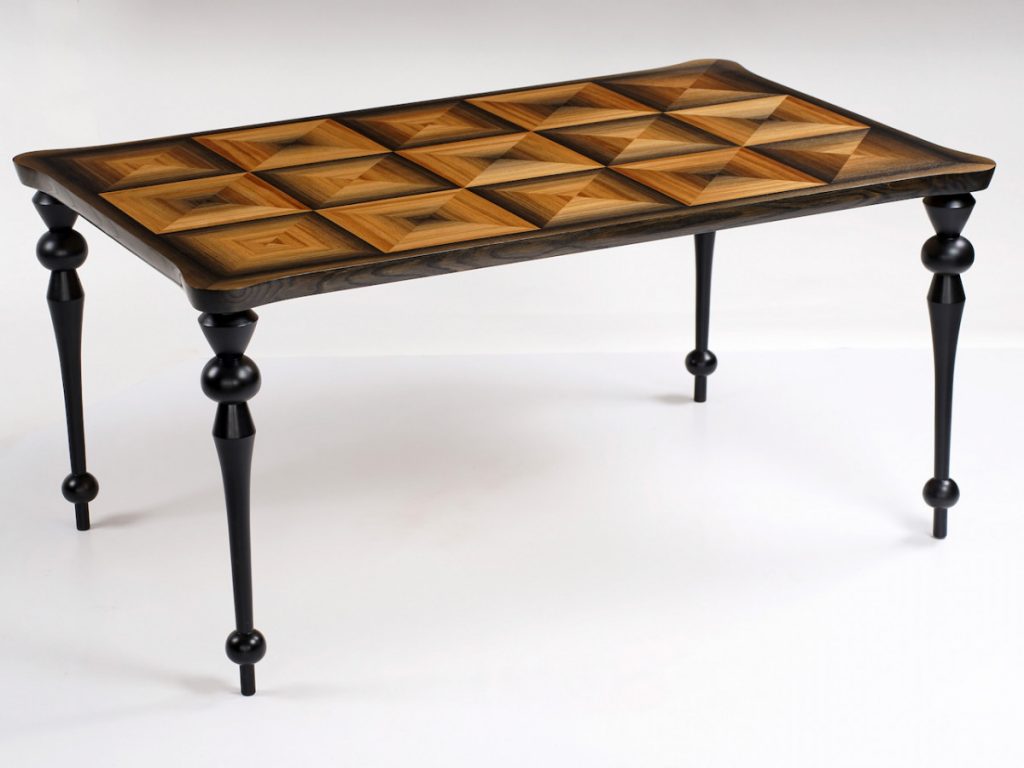
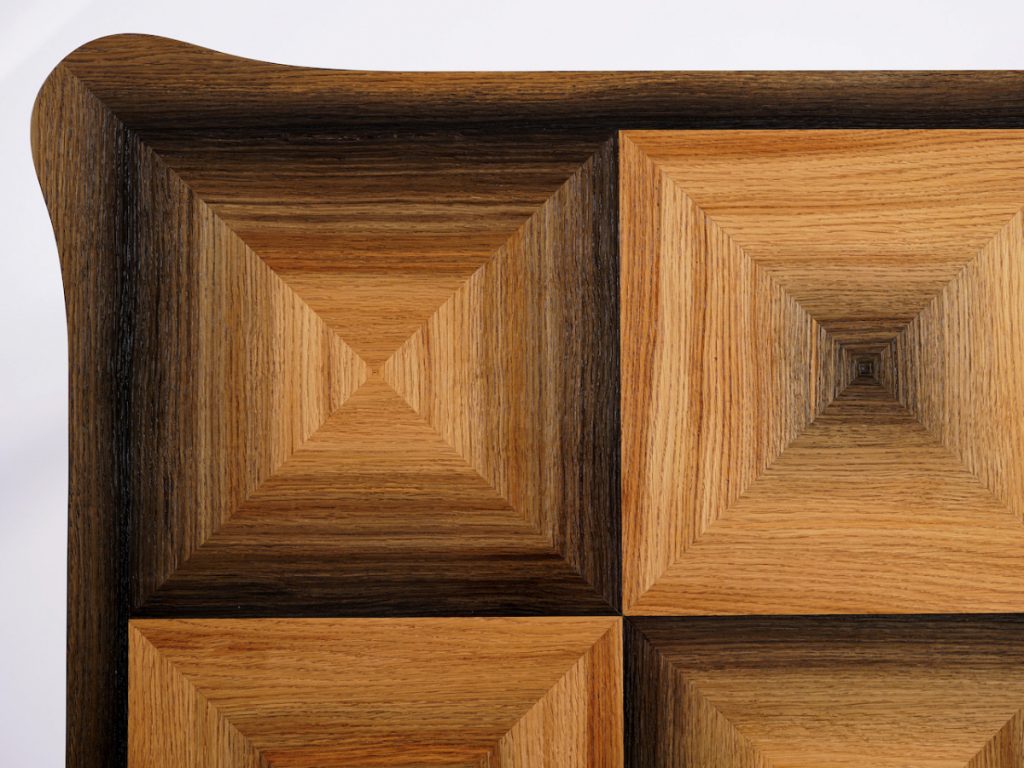
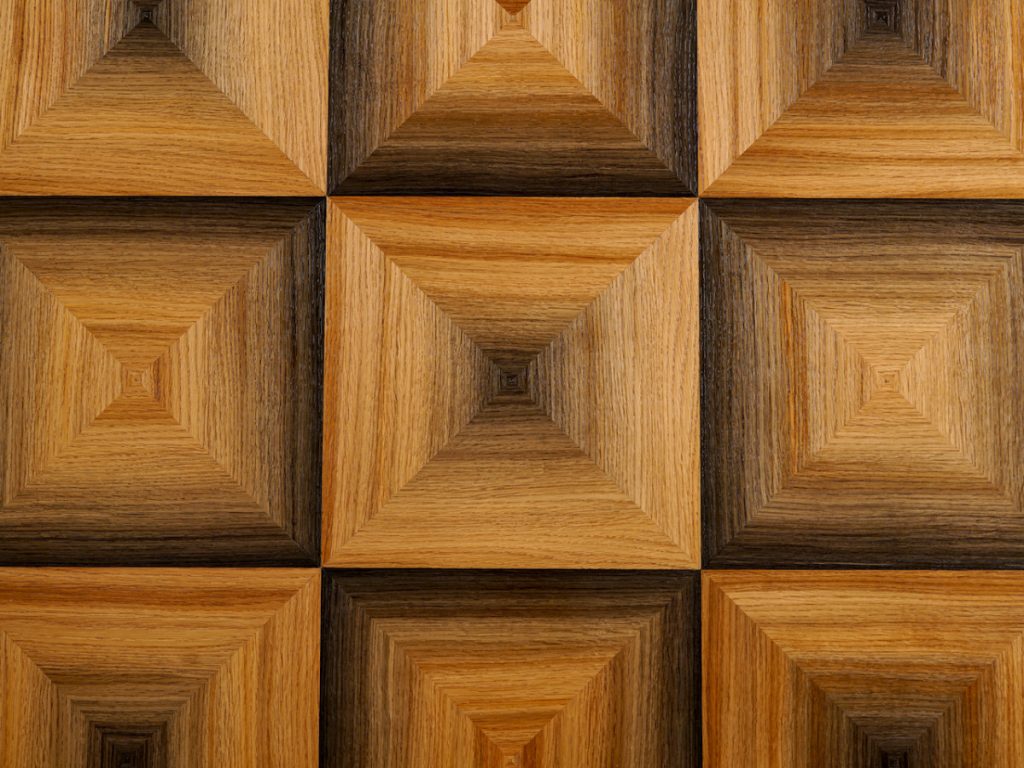
Bog Oak Organic Coffee Table
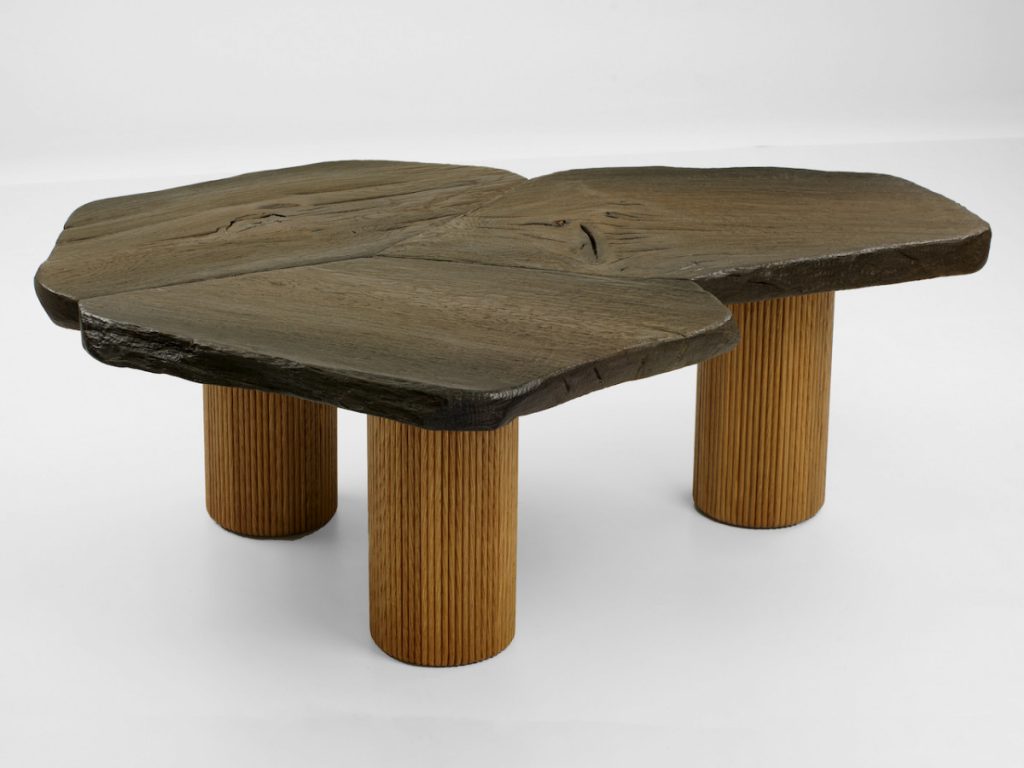
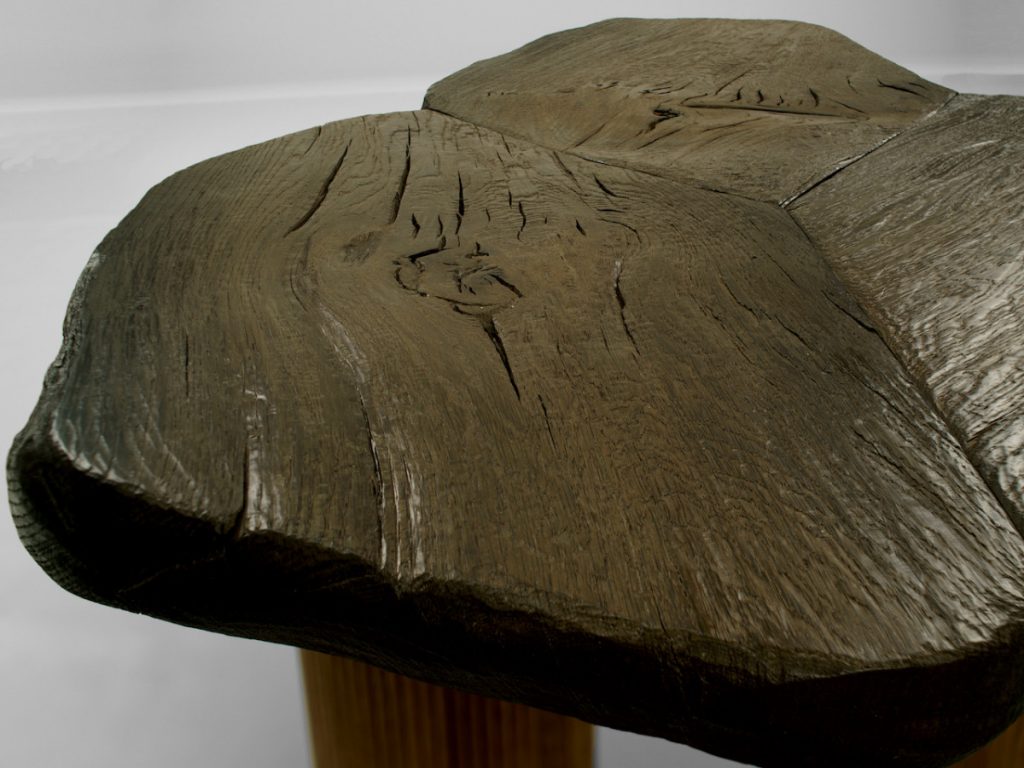
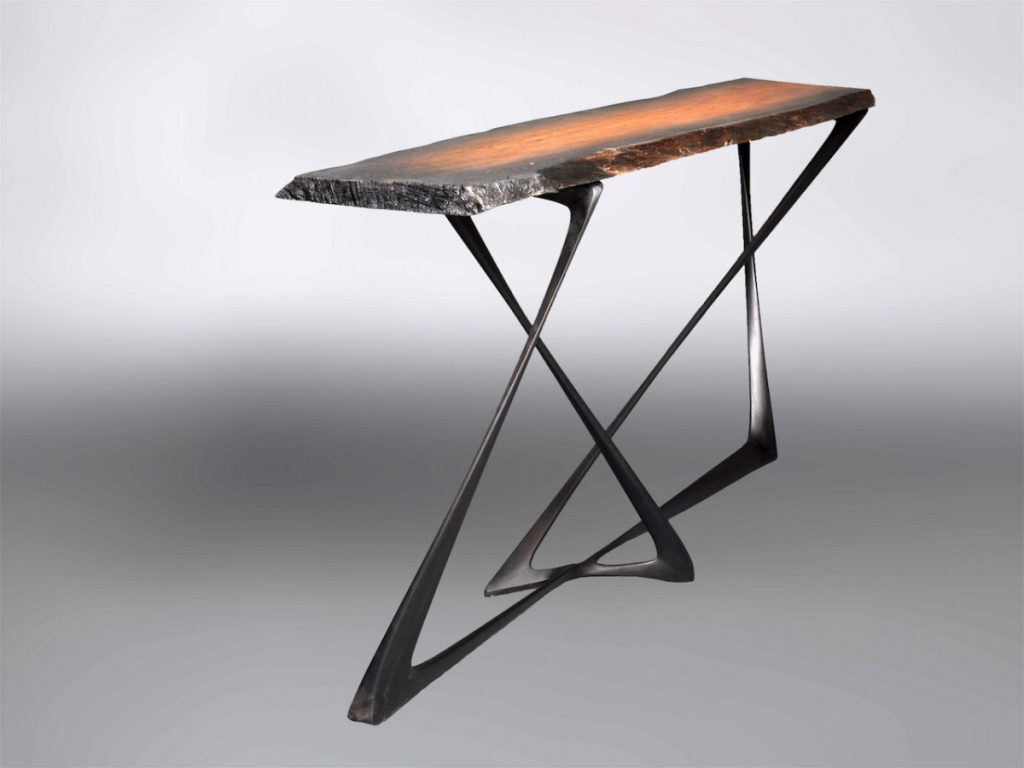
Bog Oak live-edge console table
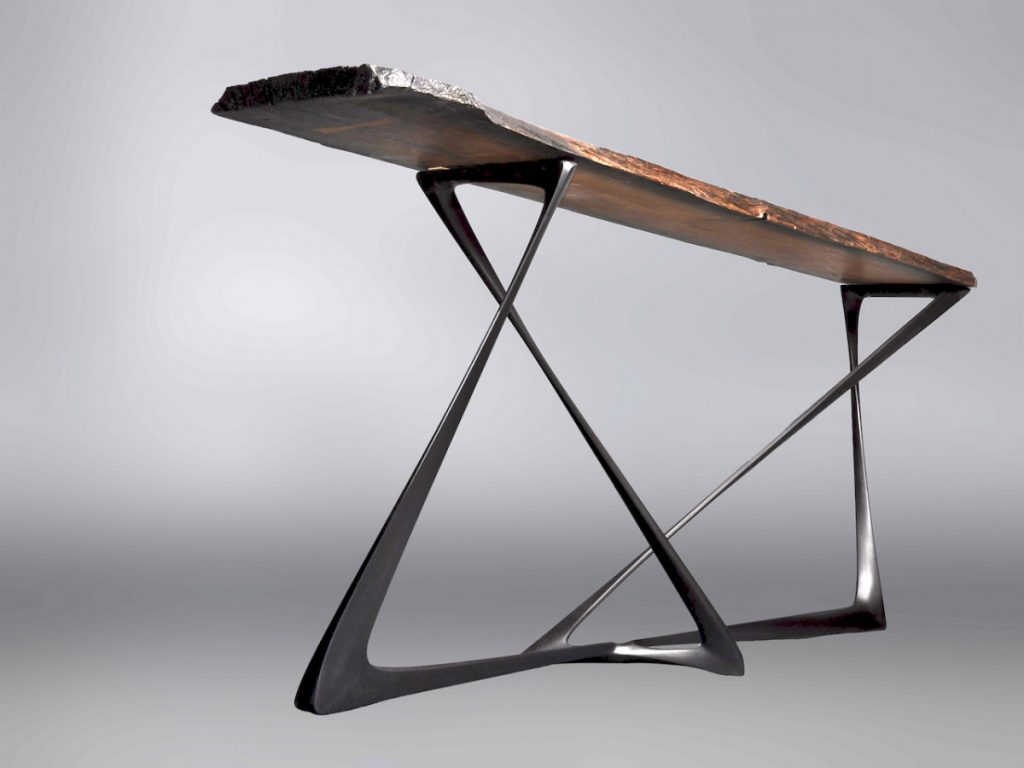
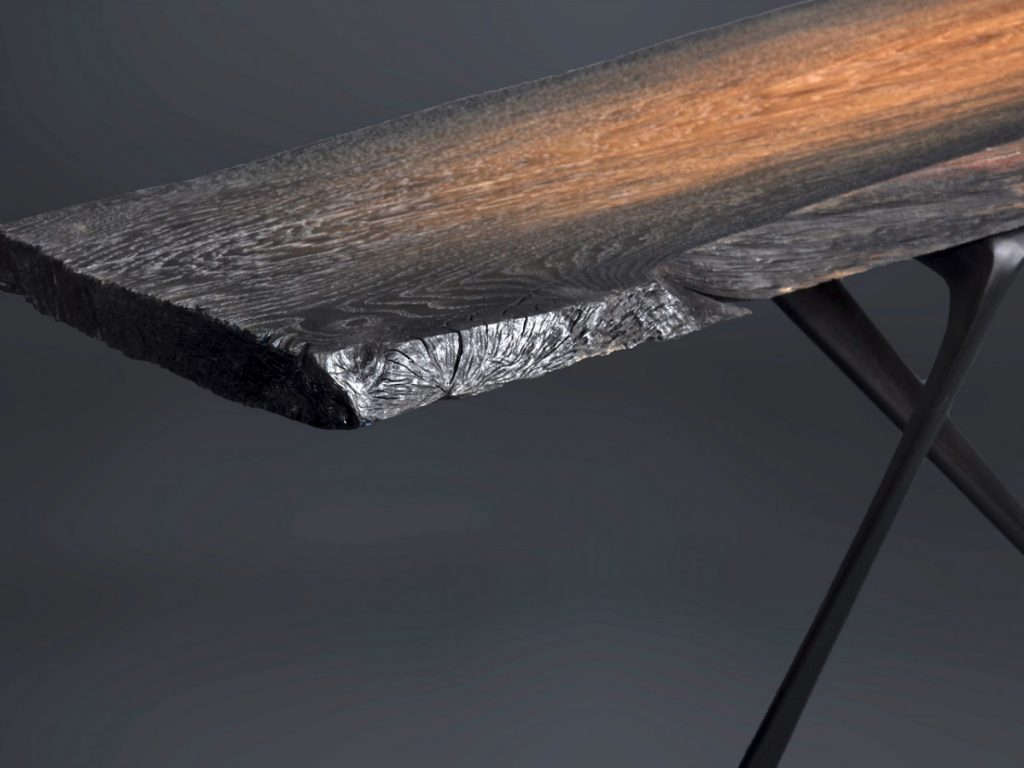
Next time I will talk about Vlad’s (Instagram) remarkable trajectory into furniture design and the way he and Tom craft beautiful and poetic works of fine furniture.
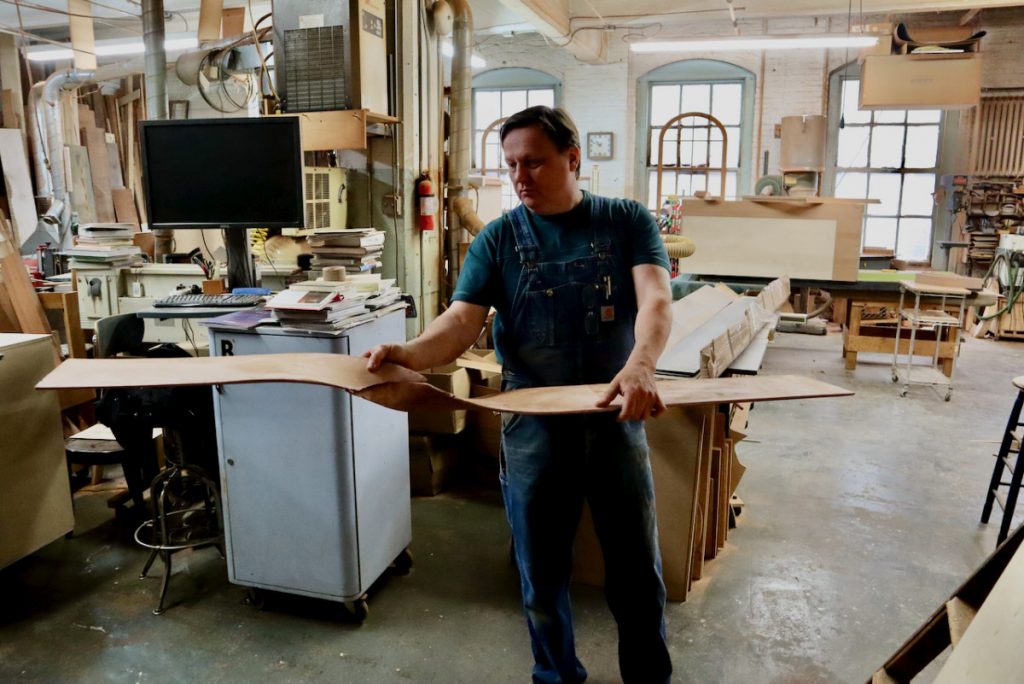
Vlad with one of his cutting edge organic flowing designs.
Here are some supplies and tools we find essential in our everyday work around the shop. We may receive a commission from sales referred by our links; however, we have carefully selected these products for their usefulness and quality.








